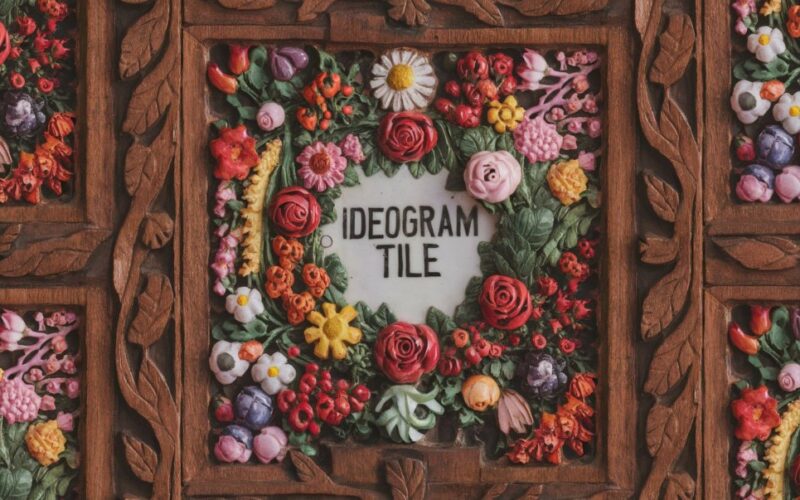Join us in returning to NYC on June 5th to collaborate with executive leaders in exploring comprehensive methods for auditing AI models regarding bias, performance, and ethical compliance across diverse organizations. Find out how you can attend here.
Ideogram, the fast-growing artificial intelligence startup known for its advanced text-to-image generation capabilities, today announced a significant addition to its platform: Ideogram Tile. This new feature allows users to create seamless, repeating patterns from a single text prompt, opening up a world of possibilities for designers, artists, and businesses alike.
With Ideogram Tile, users can generate intricate wallpapers, immersive landscapes, and endless textures by simply describing their vision in natural language. The AI-powered tool then translates the prompt into a visual pattern that can be tiled in various configurations, including grid, vertical brick, horizontal brick, row, and column layouts.
Ideogram Tile: Empowering creativity across industries
The release of Ideogram Tile comes on the heels of the company’s $80 million Series A funding round, led by Andreessen Horowitz, which closed in February. The injection of capital has allowed Ideogram to accelerate its product development and expand its offerings to a wider audience.
The introduction of Ideogram Tile is a significant step forward for the AI-driven design industry. By enabling users to create seamless patterns with ease, this new feature has the potential to streamline workflows and inspire new creative directions across various fields, such as interior design, fashion, and gaming.
For example, an interior designer could use Ideogram Tile to quickly generate a custom wallpaper pattern that perfectly complements a client’s space, without the need for extensive manual design work. Similarly, a fashion designer could experiment with unique, AI-generated fabric patterns to create one-of-a-kind garments that stand out on the runway.
Ideogram Tile is now available to Ideogram Basic, Plus, and Pro subscribers, with plans starting at $7 per month. As the AI race continues to heat up, with tech giants like Google and OpenAI vying for dominance in text-to-image, Ideogram’s focus on user-friendly, specialized tools has helped it carve out a unique niche in the market. The introduction of Ideogram Tile further solidifies the company’s position as a pioneer in the field of generative AI and sets the stage for future innovations that could transform the creative landscape.
Ideogram’s unique position in the evolving AI landscape
While Ideogram initially stood out for its ability to generate text and typography within AI images, the landscape has shifted since its debut in August 2023. Rivals such as Midjourney and OpenAI’s DALL-E 3 have introduced similar features, making letter formation more accessible across various AI image generators. This development has lessened Ideogram’s differentiator in the market.
However, Ideogram’s research indicates that human evaluators still prefer its results over those of Midjourney V6 and DALL-E 3. The company has also evolved its website to include options for different aspect ratios, image weights, public/private visibility of generations, and a toggle for the new Magic Prompt feature.
The release of Ideogram’s latest update represents a significant advancement in image models. Developed by the same team behind Google’s Imagen and Imagen video models, Ideogram offers a consumer-grade user experience combined with state-of-the-art model research. The model has largely solved the typography problem, delivering fast, versatile, and high-quality images ranging from high-definition anime to abstract art and photorealistic visuals — and following today’s update, it can now create intricate patterns for use in a wide range of industries.
Looking ahead: The future of AI-driven design
The introduction of Ideogram Tile is just the latest example of how AI is transforming the creative industries. As AI technologies continue to advance, we can expect to see even more powerful tools and platforms that enable users to generate high-quality visual content with ease.
The company’s industry leading typography support seamlessly blends text into images, ensuring perfect composition and matching style. This capability greatly amplifies the expressiveness of the generated visuals compared to most other popular models. The company’s product approach seems to prioritize artistic empowerment through iteration and fine-grained control, as evidenced by features such as image remixing, upload-as-seed functionality, and guided editing tools. Users can find inspiration on Ideogram’s public feed or immerse themselves in the vibrant Discord community.
However, the rise of AI-driven design also raises important questions about the role of human creativity in the future. While AI can automate many aspects of the design process, it is unlikely to fully replace the need for human intuition, judgment, and artistic vision.
Instead, the most successful creatives and businesses will likely be those who learn to harness the power of AI as a tool to enhance and augment their own skills and expertise. By combining the speed and efficiency of AI with the creativity and emotional intelligence of humans, we can unlock new frontiers in design and storytelling.
As Ideogram and other AI companies continue to push the boundaries of what’s possible, it will be fascinating to watch how the creative industries evolve and adapt to this new reality. One thing is certain: the future of design is looking more exciting and dynamic than ever before.
Source link
lol

